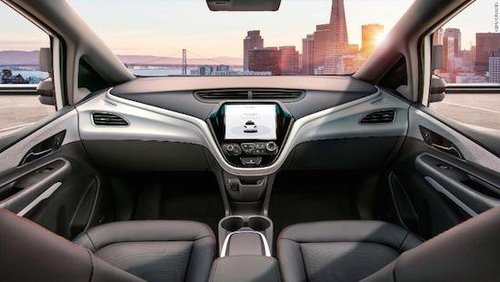The training wheels are off in America’s biggest car state — on April 2 there will be no safety human in the driver’s seat of autonomous automobiles. It shows how the self-driving
competition for market share is heating up.
Waymo (the Google car) got approval from
Arizona to operate as a ride-hailing business there a couple weeks ago.
Automation in factories occurs behind closed doors, so the jobs lost weren’t visible to the citizenry. But taxi and uber drivers are out there in the public square, and people will notice, perhaps reasoning that sweeping change is coming to the workplace, economy and society.
As of 2012, the total number of US taxi drivers was 233,900, so the eventual job loss will be significant and will show how many driving jobs are at risk for automation displacement: the total number being over 3.5 million.
![]()
In addition, automation makes immigration obsolete and particularly so in the driving category where low-skilled foreigners congregate. In fact, a 2014 New York Times article, American-Born Cabbies Are a Vanishing Breed in New York, reported, “Today, only 8 percent of New York City taxi and for-hire drivers were born in the United States.”
Unfortunately, Washington is mostly asleep to the automation threat to jobs, but not entirely: Senator Tom Cotton has a clue and co-authored legislation to reduce immigration substantially.
Back to the news of the day: the New York Times observes that the California rules require a remote driver to be able to take over if necessary — a message that sounds like catnip for hackers.
California scraps safety driver rules, gives green light to truly driverless cars, WRAL Tech Wire, February 27, 2018by New York Times —
SAN FRANCISCO — California regulators have given the green light to truly driverless cars.
The state’s Department of Motor Vehicles said Monday that it is eliminating a requirement for autonomous vehicles to have a person in the driver’s seat to take over in the event of an emergency. The new rule goes into effect on April 2.
California has given 50 companies a license to test self-driving vehicles in the state. The new rules also require companies to be able to operate the vehicle remotely — a bit like a flying military drone — and communicate with law enforcement and other drivers when something goes wrong.
The changes signal a step toward the wider deployment of autonomous vehicles. One of the main economic benefits touted by proponents of driverless vehicles is that they will not be limited by human boundaries and can do things like operate 24 hours in a row without a drop-off in alertness or attentiveness. Taking the human out of the front seat is an important psychological and logistical step before truly driverless cars can hit the road.
“This is a major step forward for autonomous technology in California,” said Jean Shiomoto, director of California’s DMV. “Safety is our top concern and we are ready to begin working with manufacturers that are prepared to test fully driverless vehicles in California.”
[ . . . ]
California requires companies to report the number of “disengagements,” or instances when human drivers are forced to take over for the autonomous vehicle. Waymo had the fewest number of disengagements — based on a per mile basis — of all the companies testing cars on California roads.
Between Dec. 2016 and Nov. 2017, Waymo’s self-driving cars drove about 350,000 miles and human drivers intervened 63 times — or about 5,600 miles between every disengagement. Over the last few years, Waymo has made steady progress in reducing the instances where people need to retake the wheel.














